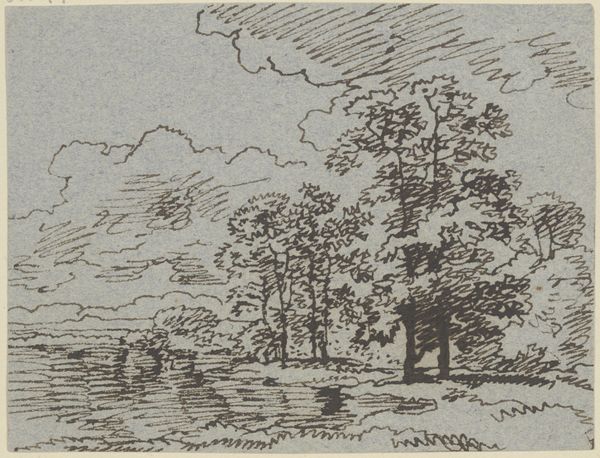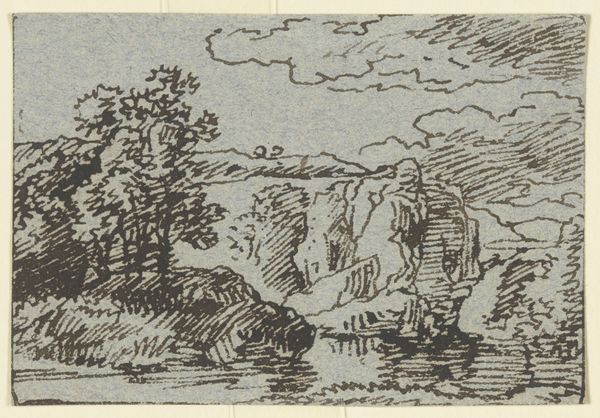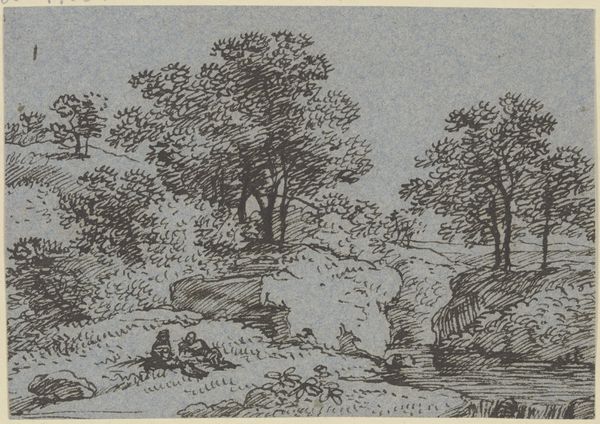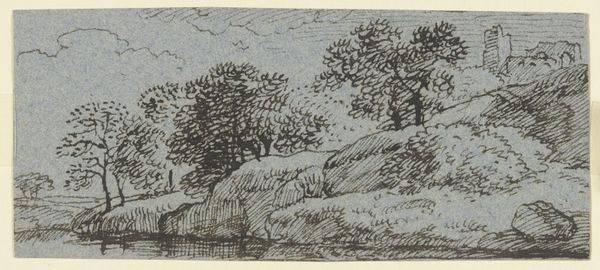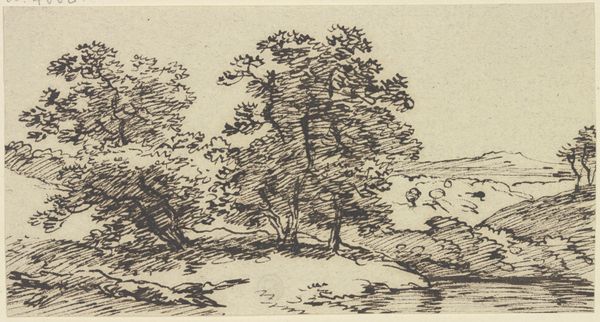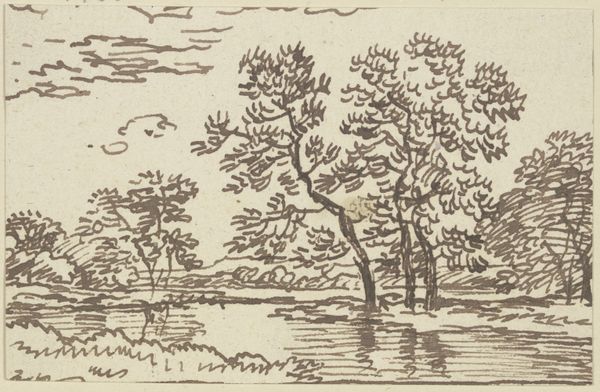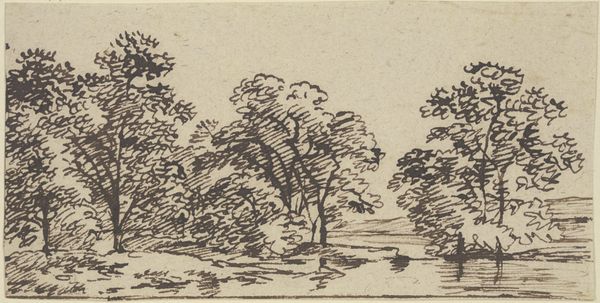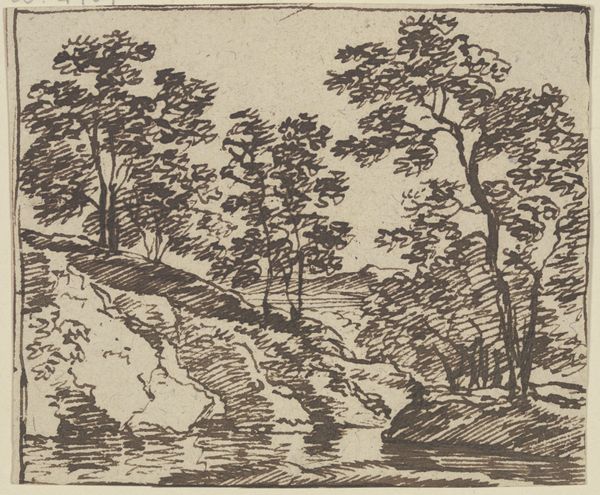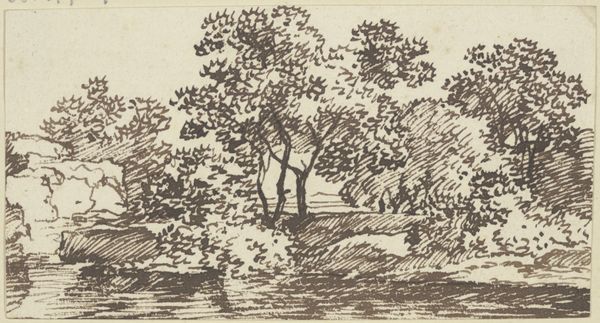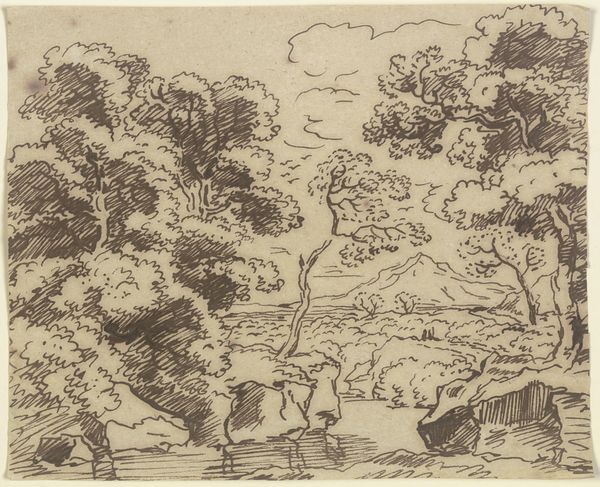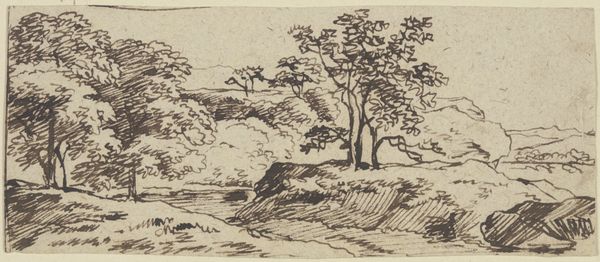
drawing, paper, ink
#
drawing
#
landscape
#
etching
#
paper
#
ink
#
line
Copyright: Public Domain
Curator: The work before us, housed here at the Städel Museum, is titled "Gewässer, links ein Wäldchen, rechts ein Felssporn," which translates to "Waters, a small forest on the left, a rocky spur on the right." It's an intriguing drawing attributed to Franz Kobell. Editor: The immediate impression is one of melancholy. The stark lines, the grey tones of the paper, and the composition itself evoke a quiet solitude. Curator: Kobell has captured what feels like a memory of a natural scene using ink on paper. Note the contrasting techniques: the rapid, almost scribbled lines that give the impression of dense foliage, against the calmer, horizontal strokes suggesting water. What feelings might these elements and that contrast evoke? Editor: The scribbled foliage speaks to nature’s chaotic vitality, a sense of wilderness unsubdued. But alongside that untamed energy is this clear formal structure in the placement of elements, left and right, dark and light, forest and water—suggesting an attempt to bring order or reflection on that vitality. There is this tension. I am interested if his contemporary viewers read that same symbolism, the taming or human reading of the raw nature they experienced everyday? Curator: I think the historical context deepens the impact of those choices. During that era, landscape drawings served both as documentation and as personal expressions. A kind of meditation, but not like you may be thinking with more direct iconography, but the natural elements stand alone representing feelings without obvious visual ques. Editor: Absolutely, art became entangled with developing national identity. Were landscape scenes selected and framed in such ways as to symbolize particular virtues or reflect idealized visions of the fatherland? Do the forest and rocky prominence function almost as characters in a landscape of developing cultural or social memory? The ink becomes a political tool? Curator: Possibly, although with an image this simple I am reticent to lean too heavily on one concept or another. There's a simplicity here, an honesty to his method. The act of drawing, a visual conversation the artist had with nature that echoes a long visual lineage of rendering landscape as more than surface or fact. Editor: True. Perhaps it's best to allow the drawing to exist within the layered and contradictory social landscape from which it emerged, while also giving it the personal artistic license it demands. It reminds me of that balance we try to reach here at the museum. Curator: It’s fascinating how a seemingly simple ink drawing on paper can invite so much thought.
Comments
No comments
Be the first to comment and join the conversation on the ultimate creative platform.
